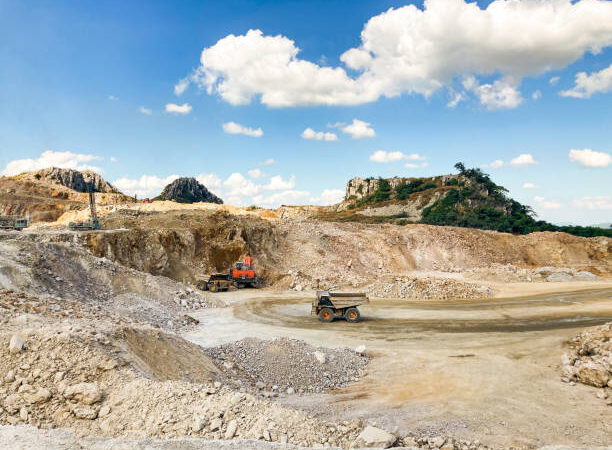- 01/26/2025
- admin
The world of stone quarrying has transformed significantly in recent years. With increased environmental consciousness and technological enhancement, the quarrying and processing of stones like marble and granite today are much more sustainable than ever before. Once surrounded by concern for the environment, today’s stone industry is adopting practices that do not only protect natural resources but also enhance the quality and availability of materials such as Egyptian marble and granite.
In this blog post, we take a look at how practices relating to sustainability are changing how natural stones are sourced and processed, and what these changes might mean for the future of stone in interior design, construction, and more.
The Importance of Sustainable Stone Quarrying
Natural stones, such as marble and granite, have been highly valued in architecture and design for thousands of years, from the magnificence of Egyptian pyramids to the most exquisite and refined countertops, carrying timeless beauty, strength, and value. But it is with time that some of the traditional quarrying methods bring up issues of sustainability—the need for greener ways within the stone industry.
Sustainable stone quarrying practices involve activities that reduce the environmental impact by minimizing energy use, waste, and habitat disruption while maximizing the extraction of natural resources. Such practices mean nature is preserved, and quality and durability are increased in the products of stone.
Traditional vs. Modern Stone Quarrying: A Move to Sustainability
Traditional Stone Quarrying Methods
Historically, stone quarrying involved heavy machinery and explosives to remove large amounts of stone from the earth. While effective, the methods used consumed huge energy, disrupted ecosystems, and produced a huge amount of waste material. Moreover, traditional quarrying techniques consumed large volumes of water, leading to resource depletion in some areas.
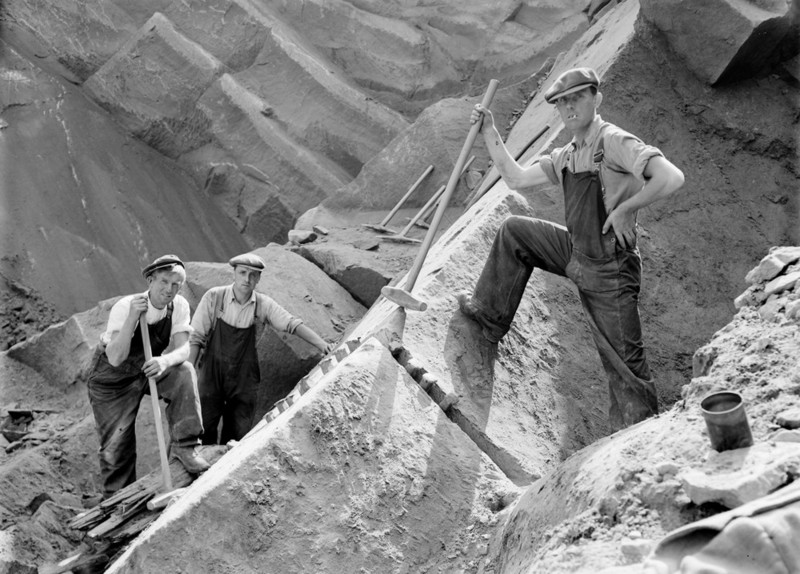
Modern Sustainable Stone Quarrying Techniques
The shift in the quarrying industry is towards quarrying methods that are efficient, safe, and environmentally friendly. Advanced technologies have become standard at quarries, including diamond wire sawing, precision cutting, and robotic machines. These methods use less energy, significantly reduce waste, and protect surrounding ecosystems.
For example:
- Diamond Wire Sawing: This technology uses a high-speed wire embedded with diamond segments, allowing for precision cuts that preserve the integrity of the stone while reducing material waste.
- Water Recycling Systems: Modern quarries are equipped with water recycling systems, which reduce water usage by as much as 80%, essential in regions where water is a scarce resource.
These new techniques enable quarries to extract the maximum amount of high-quality stone from every block, reducing waste and environmental damage.
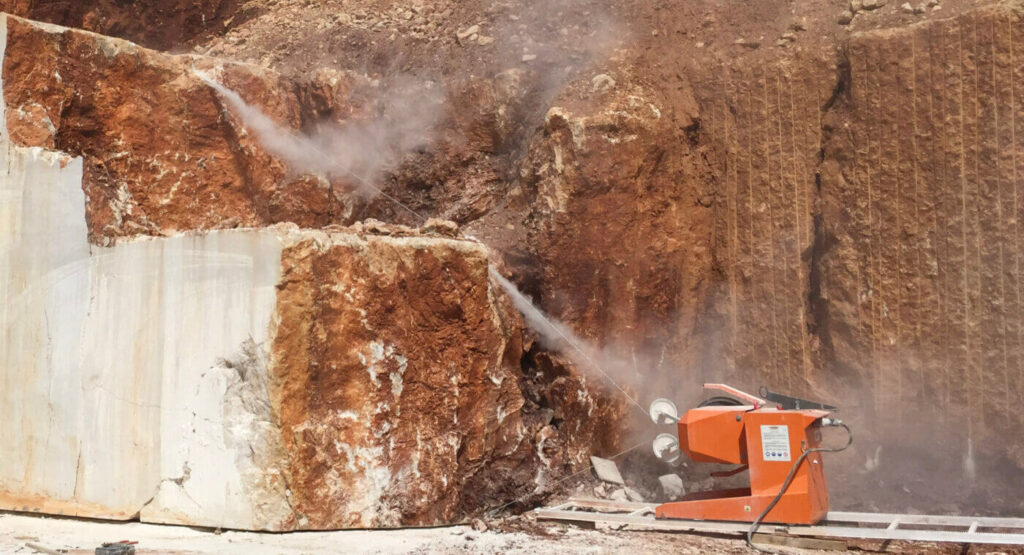
Sustainable Practices in Stone Processing
The second step is to process the extracted stones. Processing turns rough and raw material into polished, prefabricated slabs or tiles ready for installation; in its traditional way, it engages great quantities of water, chemicals, and energy. But with the outlook towards sustainability, there has been a difference brought about within the stone industry in stone processing to decrease the harmful effects on nature.
Energy-Efficient Machinery
Advanced machinery has been introduced to replace energy-intensive processes, reducing energy consumption by 30–50% in some cases. For example, the use of CNC machines (Computer Numerical Control) has automated many tasks and optimized both precision and efficiency.
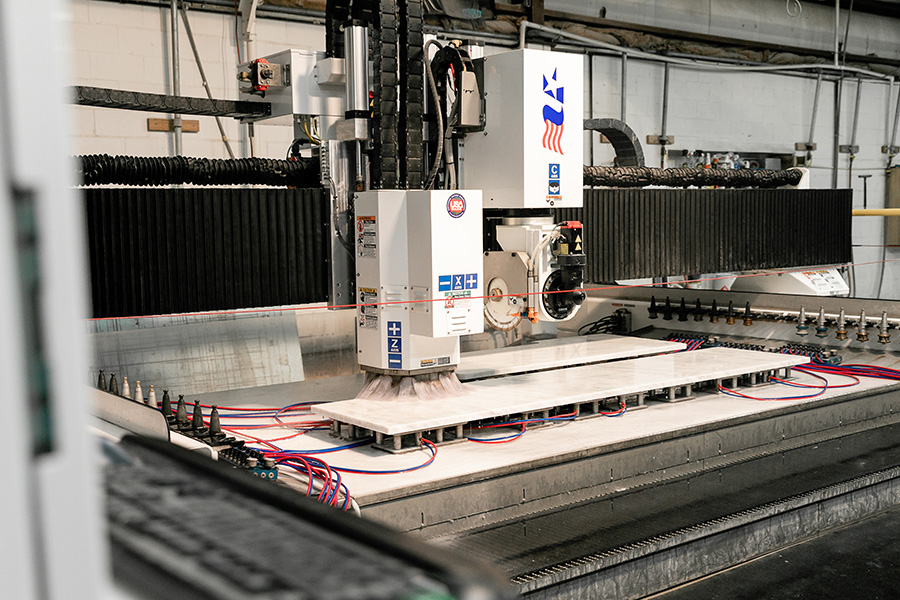
1-Recycled Water Systems
Another important stone processing-related aspect concerning water: most modern-day processing plants are planned and constructed to have a closed-loop system of using water in the cutting and polishing process where the used water is filtered and recycled; hence, greatly decreasing the need for fresh water and preventing discharge of the same into the environment.
2-Eco-Friendly Sealants and Finishes
Traditional stone finishes are typically fabricated from aggressive chemicals that off-gas VOCs (Volatile Organic Compounds). Available today are environmentally responsible low-VOC sealants and finishes that provide long-lasting protection of marble, granite, and other natural stones without threatening the environment.
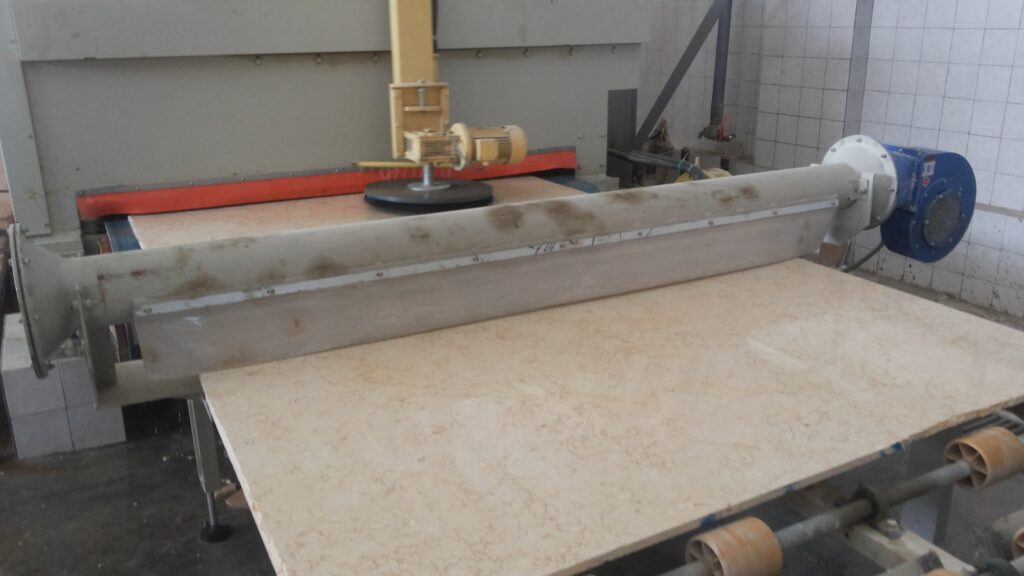
3-Waste and Dust Management
Dust and stone remnants are the natural by-products of stone processing. However, with dust management systems and recycling programs, processing plants can capture dust for safe disposal or recycling. Additionally, stone remnants could be reprocessed into aggregate materials to reduce the demand on raw resources.
A Look into Egyptian Marble and Granite
Egyptian marble and granite are very well known for their special characteristics, strength, and beauty. Quarried and used in construction since ancient times, these stones’ rich heritage is now being safeguarded with the help of sustainable practices. Here’s how sustainable stone quarrying and processing practices add value to Egyptian stones:
- Increased Durability: With sustainable stone quarrying and processing techniques, the possibility of fractures and defects is minimized, so the final stone products are much stronger and more durable.
- Unique Aesthetic Qualities: Advanced, sustainable cutting techniques allow for control, preserving the natural color and veining patterns that have made Egyptian marble and granite so distinct.
- Preservation of Resources: With optimal extraction and recycling of water and other resources, the quarries in Egypt can supply demand for these fine stones while preserving natural reserves for future generations.
Environmental Benefits of Sustainable Stone Quarrying and Processing
The environmental benefits of sustainable stone quarrying and processing practices are huge, ranging from carbon emissions to local ecosystems.
1-Reduced Carbon Footprint
With the use of energy-efficient machinery and transportation methods, sustainable stone production emits fewer greenhouse gases. For instance, quarries using renewable sources of energy, such as solar power, have reportedly reduced emissions by as much as 20%.
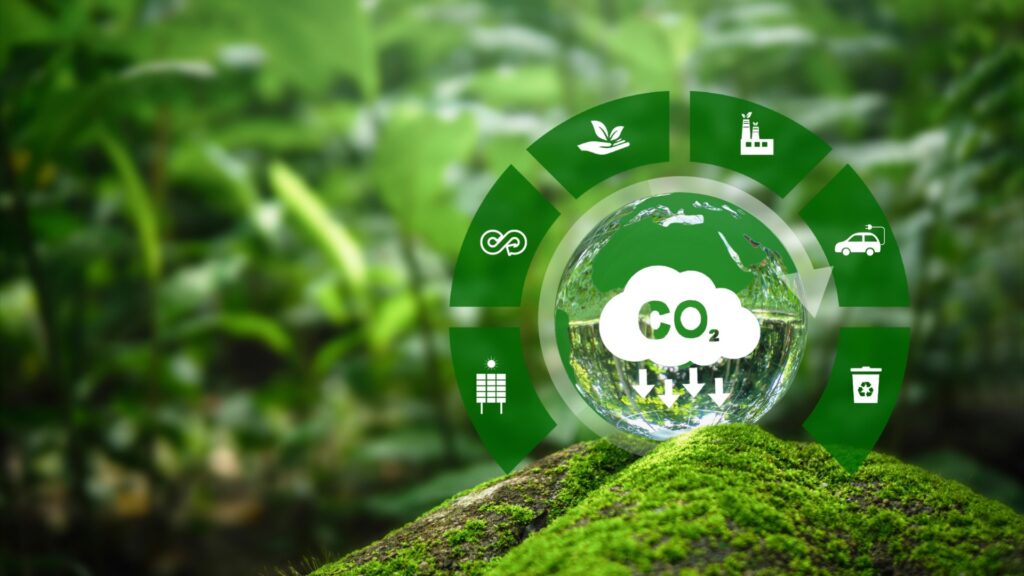
2-Preservation of Ecosystems
Sustainable practices prioritize the preservation of natural habitats around quarries, reducing disturbance to local wildlife and plant life. Quarries can work in harmony with their environment through ecosystem-friendly planning and reduced land disturbance.
3-Water Conservation
Thanks to the introduction of water recycling systems, modern stone processing can save up to 80% of fresh water consumption, which goes a long way toward conserving water.
4-Waste Reduction and Recycling
Waste can be reduced as much as 60% through efficient cutting and extraction methods, along with recycling programs at the quarries. The scraps of stones are mostly used in other ways, such as in landscaping materials and aggregates.

How Sustainable Stone Quarrying Helps Both Designers and Homeowners
Sustainably sourced stone offers aesthetic and quality benefits, in addition to peace of mind for the environment. Quarrying and processing in a sustainable manner ensures more consistent, better-colored, and higher-quality stones; therefore, Egyptian marble and granite will remain on the top list for countertops, flooring, and wall cladding.
1-Better Quality
Now, with advanced, eco-friendly quarrying techniques, Egyptian marble and granite are extracted with precision, preserving the natural colors and patterns of the stone and minimizing damage.
2-Longer Life Span
Sustainable quarrying produces higher quality stone with fewer fractures, so there is less potential for damage over time, meaning longer-lasting beauty and less need for replacement, benefiting both homeowners and the environment.
3-Value for Investment
This can be used as a selling point to attract builders and homeowners; the value of the property is increased with sustainably sourced stone. With eco-friendly materials in high demand due to rising environmental consciousness, such materials are in a position to command premium prices in the marketplace.
Sustainable Practices in Action: Statistics and Industry Trends
- Increasing Demand for Sustainable Materials: There has been an increase in the demand for eco-friendly building materials in the past few years by over 25%, owing to consumer preference and also government regulations.
- Waste Reduction Initiatives: According to industry reports, as much as 60% of stone waste is now diverted for other uses, contributing to a circular economy within the stone industry.
- Energy Efficiency Gains: Improvements in energy efficiency brought about by new machinery have, in many cases, reduced energy consumption by 30–50% within stone processing plants—a remarkable reduction in the carbon footprint of the industry.
Future Directions for Sustainable Stone Quarrying and Processing
The level of sustainability in the stone industry will continue to improve with advancing technology, resulting in even less environmental damage caused by quarrying and processing. Here are some expected trends:
- Increased use of renewable energy: The availability of more solar and wind power is likely to make more quarries shift to renewable sources of energy.
- Smart technologies: Data-driven tools and AI are being developed that can analyze data in a quarry in real time. This helps improve accuracy within stone extraction and reduces waste.
- Ecological transportation: Quarries are now starting to adopt electric vehicles for the transportation of stones, which reduce emissions and thus are leading toward a greener future.
The Evolution Toward Sustainable Stone Quarrying
The stone industry has taken huge strides in sustainable practices. Focused on waste reduction, resource conservation, and ecosystem protection, quarrying and processing are now aligned with environmental goals. This has improved not only the quality and durability of stones like Egyptian marble and granite but also provided a more eco-friendly choice for today’s designers, builders, and homeowners.
By choosing sustainable stone, we’re embracing materials that harmonize with nature and contribute to a more responsible future. In this evolution of stone quarrying, quality, beauty, and environmental care come together – setting the foundation for more sustainable design for years to come.
